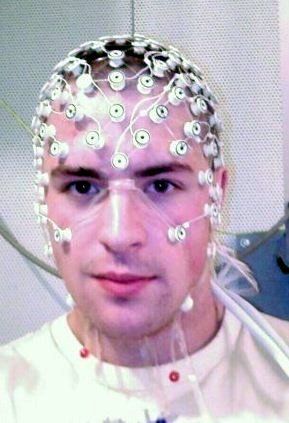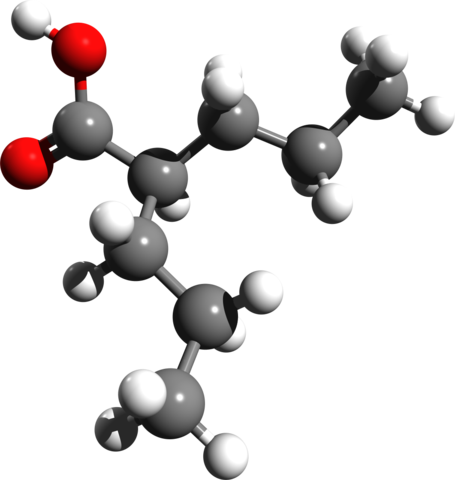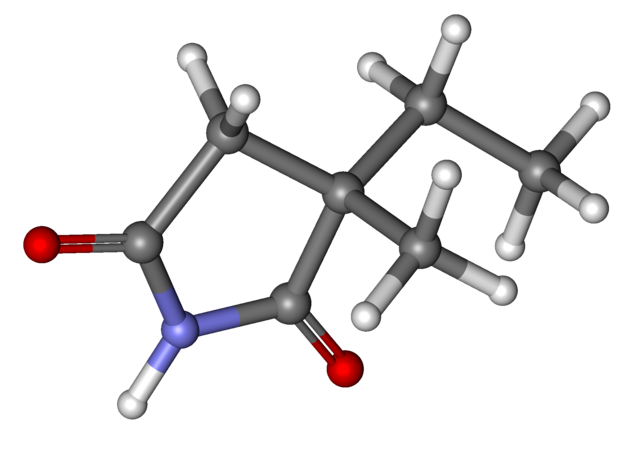Let us learn what epilepsy is and how we can treat it?
Epilepsy is a disorder that affects about 0.5-1% of people. It is accompanied by epileptic seizures that can significantly affect the usual activities and lives of a person suffering from this disorder. The frequency, form, and result of epileptic seizures depend most often on the part of the brain in which the problem occurs. Sometimes its exact cause cannot be determined, but epilepsy can also occur as a result of brain damage, stroke, infection, tumor or some other type of trauma. It can also be inherited.
People who suffer from this disorder are taking antiepileptics to alleviate the symptoms of epilepsy, and only in extreme cases, when seizures are very strong, the surgical intervention can be practiced on the brain. Antiepileptics (anticonvulsants) help in the prevention of seizures in about 70% of patients, but therapy is often accompanied with adverse effects. During the 90s scientists have made significant progress when it comes to research on this group of drugs in order to reduce the adverse effects of their use.

What happens in the brain when an epileptic seizure occurs?
The epileptic seizure occurs because of neuronal discharge in the brain. Discharging occurs episodically and it is temporary, so the epileptic seizure is limited. The nature of the attack depends on the point of discharge and the extent of its spreading to other neurons. The weak attack can provoke only a brief interruption of the patient's attention and in the most intense attacks, there are strong convulsions, which can last up to several minutes. The strength of epileptic seizures and their symptoms depend on the functions of the part of the brain in which the discharge takes place. The worst symptoms occur when the discharge happens in the part of the cortex that controls the movement of our body. The convulsions are the result of that. Discharging in the reticular formation of the upper part of the brainstem causes loss of consciousness. Disorder of electrical brain activity during these attacks can be detected by an electroencephalograph.

Types of epilepsy
There are two types of epileptic seizures - partial and generalized, and we distinguish two types of epilepsy. However, there are many overlaps among them, and there are also the variations. Both types can be simple and complex. If the person does not experience a loss of consciousness, it is a simple attack, and if a person loses consciousness during the attack, it is a complex attack. The main characteristic of partial attacks is a discharge that is localized in on single hemisphere of the brain. They are most often the result of brain injuries. If a disorder of electric activity happens in a part of the cortex that controls movements, a patient will have convulsions, and this type of epilepsy is often called Jackson's epilepsy.
Wikimedia commons Thuglas Public domain
In this case, the convulsions will start in one certain muscle, and seizures will quickly spread to the whole body. Fortunately, the seizure lasts for only a few minutes, and then completely stops. A person can not control the movements of his body during the attack, and the loss of consciousness does not always occur. If discharging occurs in a temporal lobe, a person can make willing successive movements in the form of rubbing, whipping, walking, combing or dressing. After the attack, the patient can not remember that he did these actions.
Generalized attacks affect both hemispheres and patient most frequently loses consciousness at the same moment when an attack occurs. There are two subtypes - tonic-clonic and absence seizure. The first subtype is accompanied by strong contractions of the whole body, and unwanted urinating, defecation and salivation. This type of epilepsy can be dangerous because injuries are frequent. The patient loses consciousness and synchronized body contractions can last several minutes. After the attack, consciousness returns, and the patient feels tired and exhausted. Children often suffer from absence seizers. They are less dangerous but they can occur more often, even a couple of times during the same day. The patients suddenly stop the actions that they have begun, and they can even stop talking in half the sentence. The patient loses the idea about time and space and stays in the empty space for a few seconds, after which he can not remember that he had an attack and he continues to perform the action. This type of epilepsy is associated with calcium channels in the thalamus, and the antiepileptics for its treatment block these channels. One rare type of epilepsy causes progressive mental retardation of children. It is Lennox-Gastaut syndrome and this type is most likely inherited.
How do antiepileptic drugs work?
There are three mechanisms:
1. Increasing the activity of GABA (gamma-aminobutyric acid);
2. Blocking functions of sodium channels;
3. Blocking potassium channels;
4. Blocking the release of glutamate (rarely).
Mechanisms of these drugs are not completely clarified, and the reason is people who suffer from epilepsy cannot be used in experiments, so they can be tested only on animals. The antiepileptic group of drugs which is increasing GABA activity (CNS neurotransmitter) includes phenobarbitone and benzodiazepines. They stimulate the activity of GABA receptors and cause the opening of chloride channels. The vigabatrin blocks the GABA transaminase enzyme, which inactivates GABA, and in this way produces a similar effect.
The second group includes drugs that inhibit functions of sodium channels, and the most important drugs of this group are phenytoin and carbamazepine. Unlike them, ethosuximide blocks potassium channels, which function is associated with discharges that cause attacks.

Phenytoin
This chemical compound belongs to a group of hydantoins, which are similar to barbiturates. It is one of the most common antiepileptics, both for partial and generalized attacks. However, it can make absence seizures even worst so it is not recommended in those cases. The drug is well absorbed when its taken orally, while it is metabolized through the liver and eliminated in the form of glucuronide. The elimination takes about 20 hours, but the time of elimination increases with increasing dose of the drug. Side effects of this medicine can be dizziness, headache, loss of coordination of muscular movements, nystagmus, but also confusion and decrease of intellectual abilities. When the concentration of this drug in plasma is higher, the patient can suffer from more serious side effects. Megaloblastic anemia is one of them, but it can be controlled by taking folic acid. The allergic reactions are also very common, and this side effect is most often manifested as skin rash. Pregnant women should not take phenytoin because it can cause many negative effects on pregnancy.

Carbamazepine
It also inhibits sodium channels and it is used in different cases. However, it has many undesirable effects, from easier - drowsiness, dizziness, fainting, ataxia, to more serious - causes mental and motoric disorders. This drug can also cause a problem in the cardiovascular and gastrointestinal system, but the majority of these side effects is not dangerous. You should not take other medicines in combination with carbamazepine because it can boost their effect.

Valproat
Valproate is also the sodium channel inhibitor but also it causes an increase of GABA in the brain. It is a simple monocarboxylic acid and it has no similarity in the structure with other antipsychotics. It is most commonly used in the treatment of children epileptic patients because it has fewer side effects. One of the side effects is curling hair, but there are also doctors who believe that this drug can damage the liver. However, patients with hepatitis could get this illness in some other way, so it was not confirmed that valproate may have a direct relationship with it. It is not safe for pregnant women to use this drug because it is teratogenic (it can cause defects on the fetus).

Ethosuximide
This drug belongs to the succinimide group and it was found accidentally during the experiment with barbituric acid. It is very effective in absence attacks, while on other types it has no effect. It acts as a potassium channel inhibitor and disables neural discharge in the brain. The time of elimination of this medicine is about 50 hours and it is well absorbed in the body. Nausea and dizziness are the most common side effects. It can also provoke worse conditions than this.

Benzodiazepines
If a person experiences status epilepticus (a condition where the epileptic seizures do not stop and the life is endangered), the most common therapy is diazepam, given intravenously. However, these drugs cause strong sedation, and their application over a longer period of time is not possible. Some of the drugs from this group can even make epileptic seizures worse if a patient suddenly stops with therapy.
 Wikimedia commons Rune.welsh public domain: Structure of barbituric acid
Wikimedia commons Rune.welsh public domain: Structure of barbituric acidPhenobarbitone
The antiepileptic effect of this barbiturate was noticed more than a hundred years ago. The pharmacokinetic properties of this drug are not too complex and its behavior in the body is easily predictable. The elimination time is long, sometimes up to 150 hours, and it can be eliminated through the urine or through the liver. The most serious side effect of this medicine is sedation. When overdose occurs, it can cause coma and respiratory depression, as well as other barbiturates.
New antiepileptics
Thirty years ago, scientists discovered some new antiepileptics, and some of them are still in use today. One of them is vigabatrin, which inhibits the enzyme GABA transaminase, increasing the concentration of GABA in the brain. It has a long-lasting effect, which is very important, so it can be taken only once a day. It can cause depression and psychotic disorders, and these are the main side effects. Lamotrigine is also one of the newer antiepileptics and it inhibits Na-channels. It is part of the therapy for absence seizure and most often causes nausea, ataxia, dizziness, and allergic reactions. In addition to these two drugs, there are also gabapentin, felbamate, tiagabine, and topiramate. However, because of frequent side effects, scientists are trying to make new progress in this field, keeping in mind that patients with epilepsy take those drugs every day of their life.
References
Keith Parker, Laurence Brunton, etc, Goodman & Gilman's The Pharmacological Basis of Therapeutics, New York, 2006.
Rogawski, Michael, Löscher, Wolfgang, The neurobiology of antiepileptic drugs, Nature Reviews Neuroscience , 2004.


This post has been voted on by the SteemSTEM curation team and voting trail in collaboration with @curie.
If you appreciate the work we are doing then consider voting both projects for witness by selecting stem.witness and curie!
For additional information please join us on the SteemSTEM discord and to get to know the rest of the community!
Nice to know on Steemit with your informative content
Thank you for your comment and reading.
This is a very comprehensive article about the disease epilepsy and its treatments. It would be a very debilitating thing to live with knowing that you were subject to having a seizure at any time. I know there are also service dogs that can be trained to warn of an upcoming seizure. Like everything else, the drugs used to treat this can have as many side effects as helpful properties.
Thank you for reading and commenting. Yeah, I have also heard that dogs can be trained for that. They can feel in some way that seizure will happen. However, everything can be helpful to the patients with this disorder because their life it's really not easy. Drugs have many side effects and there is no drug that can cure completely. I really hope that scientists will find some solution in future.
Very informative. Thank you for sharing!
Thank you for the comment.
Congratulations @anasav! You have completed the following achievement on the Steem blockchain and have been rewarded with new badge(s) :
Click here to view your Board
If you no longer want to receive notifications, reply to this comment with the word
STOPDo not miss the last post from @steemitboard:
Oh those side effects!
You are first-rate at nonfiction and should be selling articles like this one to magazines!. Seriously. Polished and well edited too. Your posts are so informative and well-researched and documented, I see why you average one post a month.
Our nephew is epileptic. not easy to diagnose! He would stare into space for a seconds "blank out," something anyone might dismiss as part of his ADHD.
A co-worker lost his pilot's license when a head injury caused epilepsy. My grade-school classmate died at 18 when she had a seizure while driving. Rear-ended another car and went up in flame. In third grade we saw her first seizure: she blinked, picked up a textbook and hurled it at Llash Van Raden. We were stunned. It was even bigger than the time Kevin Smith fell off the slide (from the top!) in first grade and we flocked around with bated breath as teachers tested him for damage: What is your name? "Shevin Kith," and it was more awesome and terrifying than a King Kong movie. (Small school, K-12 all in one building.)
Thanks you for this article. You brought back a lot of memories, too.
Hello @anasav! This is a friendly reminder that you have 3000 Partiko Points unclaimed in your Partiko account!
Partiko is a fast and beautiful mobile app for Steem, and it’s the most popular Steem mobile app out there! Download Partiko using the link below and login using SteemConnect to claim your 3000 Partiko points! You can easily convert them into Steem token!
https://partiko.app/referral/partiko